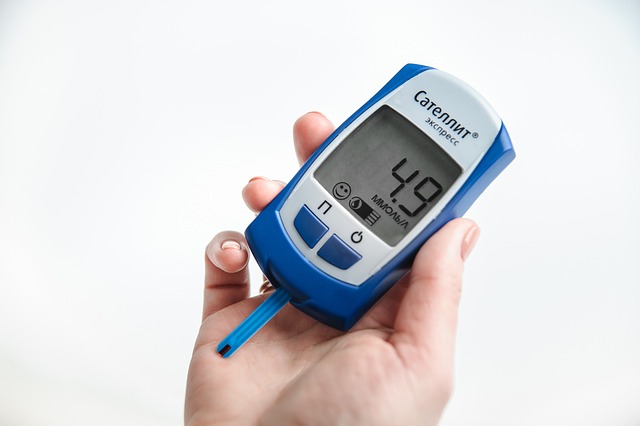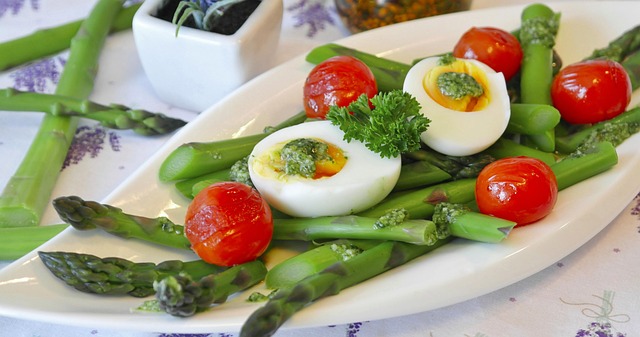In this article:
- Some high-protein foods are more nutritious than others.
- Processed meats, fatty red meats, protein powders, sugar-sweetened yogurt, fried chicken and seafood, and fatty or processed meat substitutes can have drawbacks for health and weight.
- Skinless chicken, egg whites, beans, lentils, soybeans, low-fat cheese, plain yogurt, and fish may have health benefits.
- Lark can support weight and health as you log food, get tips for eating healthier, and make small changes that can turn into healthy habits.
It’s a good idea to consume protein at most meals and snacks, but which are the healthiest sources? We’ve looked at calories, nutrients, and other factors to suggest the worst protein foods for weight and health, and the best protein sources to replace them. Enjoy!
Worst: Deli and sandwich meats
Why: Deli and sandwich meats are processed meats. They are often high in sodium, saturated fat, and cancer-causing nitrates. The World Health Organization categorizes processed meat as a carcinogen.
Here are examples of processed deli and sandwich meats.
- Deli turkey and chicken breast slices
- Ham, prosciutto, and pancetta
- Salami, bologna, and pastrami
- Bacon, Canadian bacon, and turkey bacon
If you’re going to eat processed meat, choose leaner versions,\ to reduce calories and saturated fat and opt for turkey or chicken instead of red meat.
What to eat instead: Healthier and convenient options include canned or pouch tuna, skinless chicken breast or tenderloins that you can cook and slice ahead of time, meatless deli slices, and veggie burger or turkey burger patties. Low-fat cheese can also add protein and flavor to sandwiches, salads, and anywhere else you’re used to using processed meat.
For breakfast, consider meatless or soy bacon, egg whites, beans, and low-fat cheese for protein sources. Here are some examples.
- Scrambled eggs with vegetables and low-fat cheese
- Breakfast sandwich on a whole-grain English muffin with an egg white and soy bacon
- Breakfast wrap with egg whites, low-fat cheese, salsa, and lettuce
- Breakfast bowl with black beans, cooked sweet potato, chopped tomatoes, and avocado slices
Worst: Sausages and hot dogs
Why: Sausages and hot dogs are processed meats with nitrates and sodium like processed sandwich meats. Pork and beef sausages are usually high in saturated fat.
What to eat instead: Try soy-based sausages and hot dogs free from nitrates and cholesterol, and low in saturated fat. If you’re not ready to go meatless, look for chicken and turkey-based options. Most of them have nitrates, but they can be better choices than pork and beef selections because they don’t have red meat.
Worst: Fatty red meat
Why: Frequent consumption of red meat has long been seen as a risk factor for heart disease. When you eat red meat like beef or pork, your body creates a compound called tri, or TMAO. It’s linked to a higher risk for heart disease. Fatty red meat is more harmful because of its high saturated fat content.
Here are some examples of fatty red meat.
- Ground beef
- New York strip
- T-bone steak
- Porterhouse steak
In addition, fatty red meat can be high in calories. Look at these calorie counts of certain fatty meats compared to leaner proteins.
- A 3-ounce portion of 85% lean ground beef has 200 calories, while 93% lean ground turkey has 130 calories
- A 6-ounce porterhouse steak has 400 calories, while a 6-ounce eye of round steak has 280 calories
- A 3-ounce pork chop has 180 calories, while a 3-ounce portion of tilapia or skinless chicken has 80-110 calories
What to eat instead: Try skinless chicken or fish as a main course instead of red meat. Swap lean or extra lean ground turkey or vegetable protein for ground beef in recipes like chili, meatloaf, meat sauce, and casseroles. Instead of beef burger patties, try lean ground turkey or
chicken patties or veggie burger patties with ingredients like soy, vegetables, beans, and whole grains like quinoa and brown rice.
Worst: Protein powders
Why: Protein powders can provide convenient and tasty sources of protein, but there are a few reasons why they may not be the best choice for health and weight loss. They may contain sugar or artificial sweeteners and aren’t as satisfying as eating whole foods. You may consume more calories overall when you depend on protein powders.
Luckily, most get enough protein and don’t need to rely on protein powders. You’re most likely getting enough if you have one high-protein food at most meals and snacks.
What to eat instead: Some non-perishable protein options that you can eat anywhere include canned or pouch tuna, canned or pouch beans, roasted chickpeas and edamame, peanut butter, peanuts, and nuts. Other convenient choices include hard-boiled eggs, low-fat cheese and string cheese sticks, and plain yogurt.
If you really enjoy protein shakes, try making them with alternative protein sources. Examples include cottage cheese, yogurt, and tofu.
Also, consider using your shakes to increase your consumption of vegetables, fruit, and antioxidant-rich herbs or spices. Possible ingredients include spinach, celery, tomatoes, kale, carrots, peaches, mango, berries, bananas, cinnamon, and ginger.
Worst: Flavored low-fat yogurt
Why: Yogurt is a natural source of protein. It also has calcium, which is essential for bone health, and many brands are fortified with vitamin D. Most yogurts also include live and active cultures, or probiotics, which are healthy gut bacteria.
However, flavored low-fat yogurt can have a lot of added sugar. A 6-ounce container of vanilla or fruit-flavored low-fat yogurt can have 16 grams of added sugar. Don’t be fooled by Greek yogurt, either. A 6-ounce container of fruit-flavored Greek yogurt can have 8-9 grams of added sugars. To put these numbers in perspective, a fun-sized chocolate bar has 8 grams of added sugar.
What to eat instead: Plain non-fat yogurt is lower in calories and saturated fat. Plain Greek non-fat yogurt is an even better option, with more protein. Be sure to look for varieties with live and active cultures. Flavored non-fat yogurt and some flavored Greek yogurt use non-calorie natural or artificial sweeteners. A parfait with fruit is a good option, according to the Dietary Guidelines for Americans
Worst: Fried and breaded chicken
Why: Fried chicken is high in excess fats and calories. Breading can add 1-2 servings of refined carbohydrates and is often high in sodium. Fried chicken often includes skin, which adds
calories and saturated fat. Chicken nuggets, chicken strips, chicken tenders are all examples of fried and breaded options.
What to eat instead: Baked, roasted, and grilled skinless chicken are better options. If it’s too dry for you, consider stewing your chicken in low-sodium broth with herbs and vegetables.
Chicken tacos with seasoned, shredded chicken, chicken stir fry, and chicken soup can keep your chicken tender.
If you want fried chicken, it’s easy to make low-fat and delicious substitutes for fried chicken in the oven or air fryer. Use whole-grain panko or breadcrumbs for a healthier twist. If you’re eating out, look for grilled chicken in sandwiches and on salads. Another common menu item is a veggie burger patty.
Worst: Fried and breaded fish and shellfish
Why: Fish and shellfish are great sources of protein, vitamins, and minerals. Fatty fish are great sources of heart-healthy omega-3 fats, while other fish and shellfish are low in calories. A
- ounce portion of tilapia or shrimp has 70-80 calories. As with chicken, fried and battered seafood options are high in carbs and sodium. Fish sticks, fried shrimp, popcorn shrimp, and fried clams are common examples.
What to eat instead: Baked, roasted, grilled, and broiled seafood are all better choices. You can buy fish and shellfish fresh or frozen. If you’re not a fan of plain, fresh seafood, consider these ways to get omega-3 fats.
- Eat canned or pouch tuna or salmon
- Use cooked fish or canned tuna in casseroles
- Blend cooked fish or canned tuna or salmon with pureed potato or sweet potato, egg, and herbs to make fish burger patties
Worst: Some plant-based meat alternatives
Why: Plant-based meat alternatives may not be as healthy as you assume. Many are high in sodium and added sugars, and some are high in saturated fat from ingredients like palm oil.
Here are some plant-based meat alternatives that are readily available.
- Veggie burgers
- Plant-based sausages and hot dogs
- Plant-based deli meat substitutes
- Meatless fish, chicken, and beef products
They often come with additional components in a prepared meal, such as meatless meatballs in sauce, meatless sliders with buns, or sandwiches with breaded meatless chicken.
Soy, gluten, pea protein, lentils, soy sauce, beans, wheat, nuts, and peanuts are common ingredients in plant-based sausages, hot dogs, veggie burgers, and meatless crumbles. Be sure to read the list of ingredients carefully if you’re concerned about allergens or triggers for food sensitivities
What to eat instead: Here are some less processed plant-based protein sources.
- Lentils
- Beans
- Split peas
- Peanuts
- Nuts
- Soy and soy products like tofu
If you prefer a manufactured meat substitute, be assured that it’s likely to have some advantages over the original, meat-containing option. For example, plant-based hot dogs and sausages have no nitrates, and, unlike red meat, plant-based burgers aren’t going to lead to TMAO production as your body digests them. All plant-based foods are naturally
cholesterol-free.
When choosing a packaged plant-based meat alternative, here are some factors you may want to consider.
- Sources of protein and other ingredients
- Protein content
- Amount of saturated fat, sodium, and carbohydrates per serving
- Other ingredients are FDA-approved, but some people prefer not to consume them. Examples are MSG, xanthan gum, or sodium benzoate
Here are more examples of nutritious meals and snacks with protein.
How Lark Can Help
Weight and health management are easier when you eat well, so it’s important to know how to select the best options. Lark offers additional tools and support. Your Lark coach is available 24/7 for nutrition and physical activity coaching and tracking. Lark can help you make healthy choices and establish habits that fit into your lifestyle so you can manage weight and support health with or without GLP-1 medications.
Click here to see if you may be eligible to join Lark today!











.webp)






